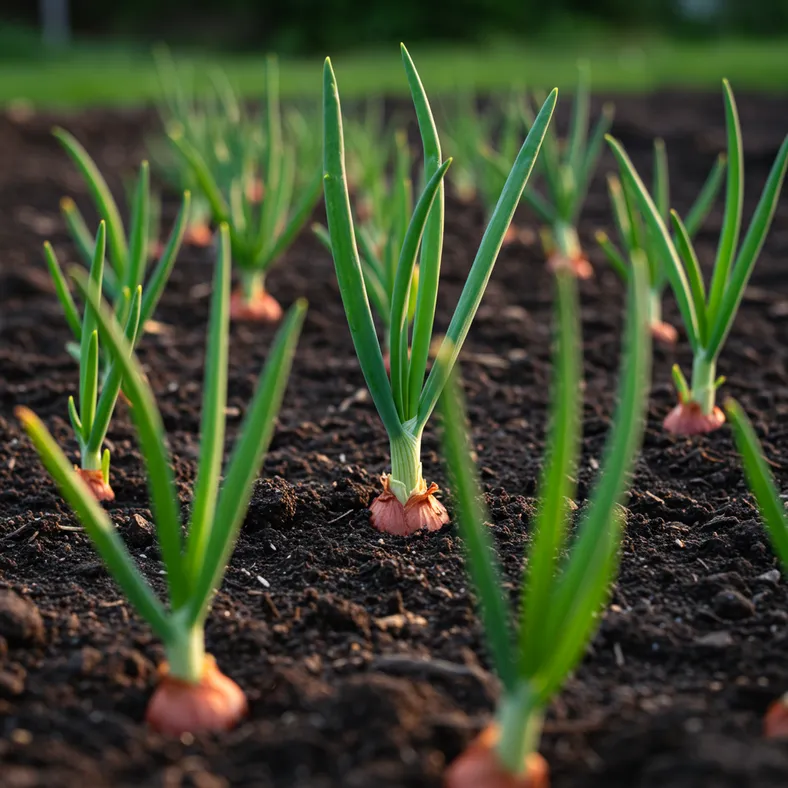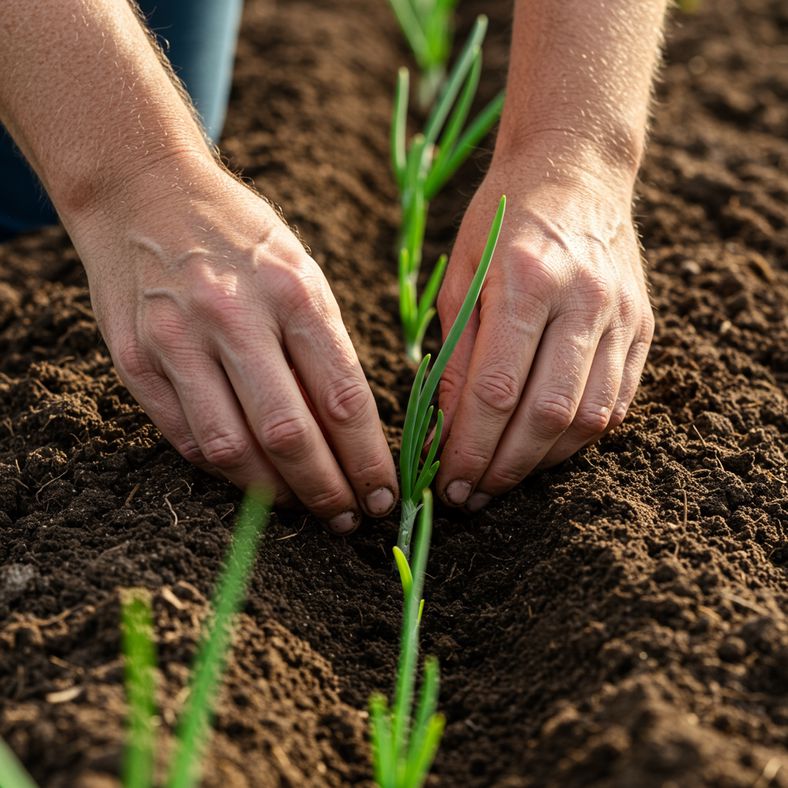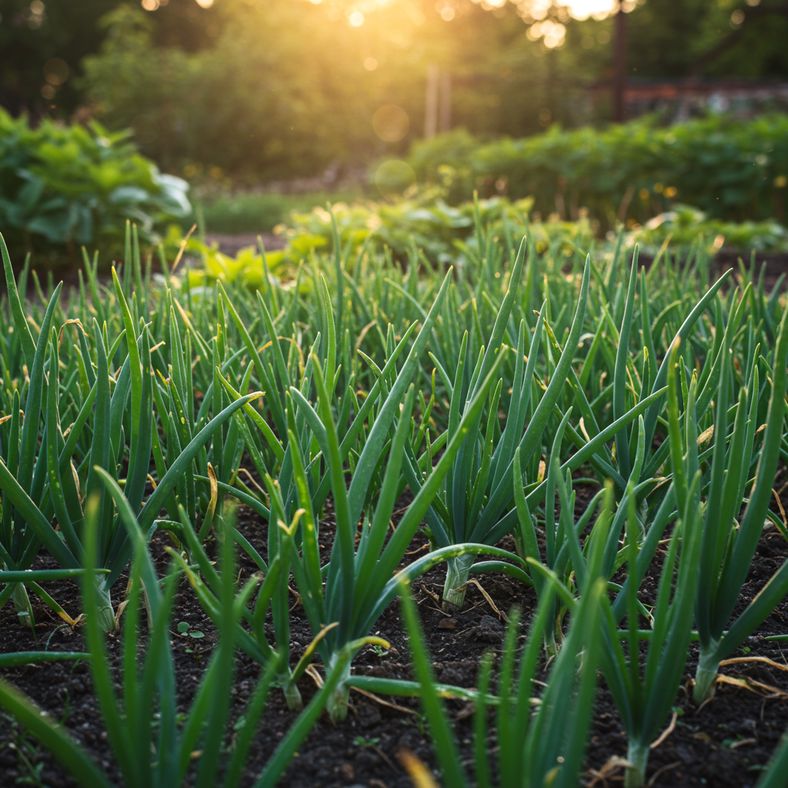How to Grow Onions: Complete Guide for Home Gardeners
Growing onions is surprisingly simple and rewarding. With the right soil conditions, proper spacing, and consistent care, you can harvest sweet, flavorful onions from your home garden. This comprehensive guide covers everything from soil preparation to harvest and storage.

Growing onions is one of the most rewarding and efficient additions you can make to your home vegetable garden. These versatile vegetables are not only delicious but surprisingly easy to cultivate. Whether you're a beginner gardener or looking to perfect your technique, this comprehensive guide will walk you through every step of successfully growing onions from planting to harvest.
The beauty of growing onions lies in their simplicity - if you can poke a hole in the ground, you can grow an onion. With proper soil preparation, adequate spacing, and consistent care, you'll be enjoying homegrown onions in no time.
Quick Guide to Growing Onions

Before diving into the details, here's a quick overview of the essential steps for growing successful onions:
- Timing: Plant onions in early spring once the ground is workable
- Location: Choose a sunny spot with fertile, well-drained soil
- Spacing: Plant onions 6 inches apart in rows 12 inches apart
- Soil pH: Maintain soil pH between 6.0 to 6.8 for optimal growth
- Watering: Keep soil consistently moist, especially during bulb formation
- Feeding: Use continuous-release plant food for best results
- Harvest: Onions can be harvested at any size depending on your needs
Soil, Planting, and Care

Choosing the Right Variety
The sweetness of your onions depends on both genetics and growing conditions. For the mildest, sweetest onions, select varieties known for their mild flavor:
- Texas Sweet: Ideal for southern latitudes
- Walla Walla: Perfect for northern regions
Soil Requirements
Onions thrive in specific soil conditions that promote healthy bulb development:
- Sunlight: Full sun exposure for at least 6-8 hours daily
- Drainage: Well-draining soil to prevent root rot
- pH Level: Soil pH between 6.0 and 6.8
- Soil Structure: Loose, fertile soil enriched with organic matter
Soil Preparation
Proper soil preparation is crucial for onion success:
- For raised beds: Use high-quality raised bed soil mix
- For in-ground planting: Mix 3 inches of compost into the top 6 inches of soil
- Create raised rows by mounding soil, especially beneficial for heavy clay soils
Planting Technique
Follow these steps for proper onion planting:
- Plant seedlings 1 inch deep with roots well-covered
- Keep the neck of the plant at soil level to prevent rot
- Space plants 6 inches apart in furrows 12 inches apart
- Choose pencil-diameter seedlings for the largest bulbs
Ongoing Care
Consistent care throughout the growing season ensures healthy onion development:
- Watering: Maintain consistent soil moisture as onion roots are shallow and inefficient at water uptake
- Feeding: Apply continuous-release fertilizer following package directions
- Mulching: Use light, fine mulch but remove it as bulbs begin to surface
Troubleshooting

While onions are generally easy to grow, watch for these common issues:
Common Pests
- Onion Thrips: Tiny black insects that hide in leaf folds and suck plant sap
- Aphids: Small insects that cluster on leaves and stems
- Onion Root Maggots: Larvae that cause plants to wilt slowly
Prevention and Control
For specific pest control methods and organic solutions, contact your local Extension agency for region-appropriate recommendations. Early detection and proper garden hygiene help prevent most pest problems.
Harvest and Storage

Early Harvest (Green Onions)
You can begin harvesting young onions just weeks after planting:
- Harvest when plants reach desired size for scallions or spring onions
- No perfect size exists - harvest based on your culinary needs
- Plant larger seedlings close together for quick green onion harvests
Full-Size Bulb Harvest
For mature onions, timing is crucial:
- Ready Signs: Bulbs are large and tops begin yellowing and falling over
- Harvesting: Pull onions up and shake off excess soil
- Initial Curing: Lay out with tops attached in warm, airy location
Curing and Storage Process
Proper curing extends storage life significantly:
- Cure onions for 7-10 days in dry, well-ventilated area
- Ensure good air circulation and protection from rain
- Allow roots to shrivel and necks to dry naturally
- Trim tops and roots with clean pruning shears
- Remove loose dirt without damaging papery outer skin
- Store in cool, dry place with good ventilation
Storage Tips
- Sweet Onions: Wrap in newspaper and refrigerate for shorter-term storage
- Storage Onions: Keep in cool, dry place with good air circulation
- Avoid: Storing in plastic bags or humid conditions